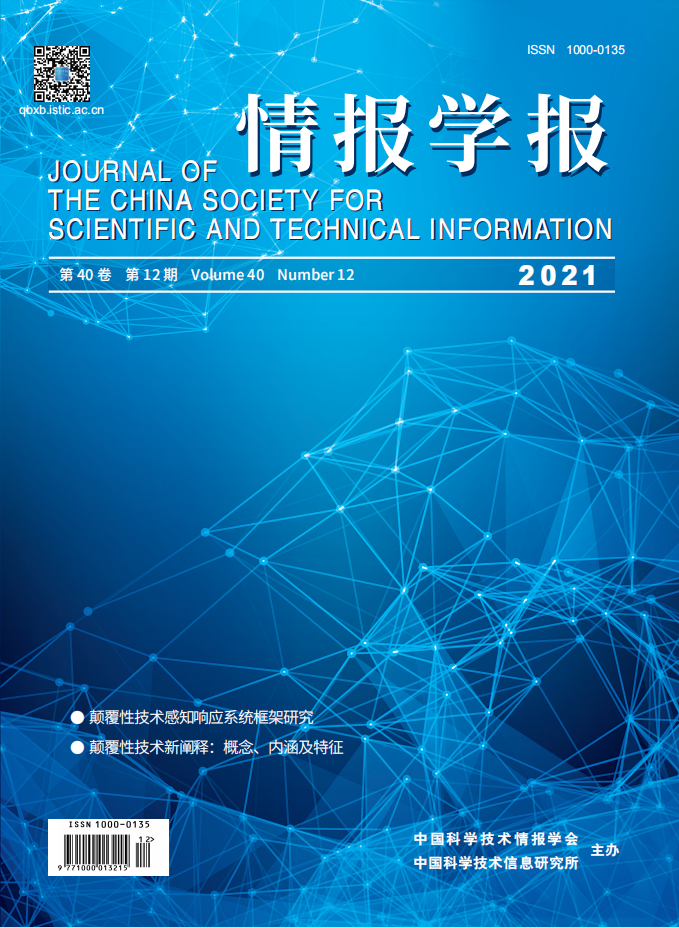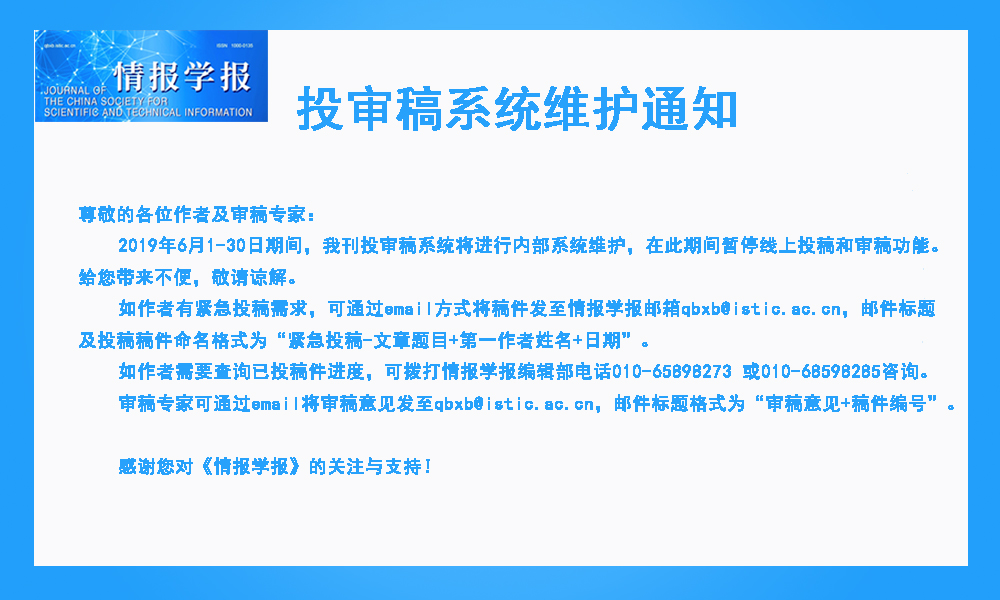 |
|
2022 Vol. 41, No. 4
Published: 2022-04-24 |
|
|
| |
|
|
|
|
|
337 |
Cross-Domain Recommendation Combining Heterogeneous Information Network Representation Learning Hot! |
|
 |
Yi Ming, Liu Ming, Feng Cuicui |
|
|
DOI: 10.3772/j.issn.1000-0135.2022.04.002 |
|
|
The propose of this study was to put forward a cross-domain recommendation model that uses rating information and feature information to solve the data sparseness and user's cold-start problems in a single domain. The heterogeneous network representation learning framework, which focuses on source domain and target domain, was used to generate network embedding via the meta-path and DeepWalk algorithms. Then, personalized nonlinear fusion was used to output the feature information embedding of the source and target domains. Moreover, a neural network was used to generate rating information embedding for users and items by simulating collective matrix factorization (CMF). After that, a mapping function named multilayer perceptron (MLP) was introduced to highlight the differences of user features in different domains. Based on the loss function and learning the parameters of the model, the gradient descent method was used to predict user ratings for items. The experimental results showed that the cross-domain recommendation model combining heterogeneous information network embedding achieved excellent results in improving the recommendation effect and solving the user's cold-start problem on both the Douban and Amazon datasets. In terms of improving the recommendation effect, root mean squared error (RMSE) and mean absolute error (MAE) in the target domain dropped by 1%-15%, and in the source domain they dropped by 1%-19%. In terms of the user's cold-start problem in the target domain, RMSE and MAE dropped by 1%-14%. |
|
|
2022 Vol. 41 (4): 337-349
[Abstract]
(
315
)
HTML
(187 KB)
PDF
(2761 KB)
(
436
) |
|
|
|
375 |
Measurement and Analysis of Disciplinary Discriminative Capacity from an Interdisciplinary Perspective Hot! |
|
 |
Zhang Baolong, Wang Hao, Zhang Wei |
|
|
DOI: 10.3772/j.issn.1000-0135.2022.04.005 |
|
|
The continuous development of interdisciplinary integration is gradually weakening the uniqueness of disciplines. Uniqueness is an important feature that reflects the essence and connotation of disciplines, which is of great significance for discipline innovation. This study proposes a new index of discipline discriminative capacity (DDC) to measure the difference of discipline research content to explore the uniqueness and interdisciplinarity of disciplines. Taking the humanities and social science disciplines as examples, DDC is measured by using the bibliographic data of 23 disciplines in 2019, and the differentiation between disciplines is visually analyzed via principal component analysis (PCA) and the proposed ADV (angle-distance based visualization) method. Then, a comparative analysis of the pros and cons of the DDC and discipline diversity indexes is conducted and their correlations are explained. The disciplines' cross-citation network is used to verify their discriminative capacity and discuss the influence of disciplinary intersection on it. The results show that DDC is a good indicator for measuring discipline content differentiation, the proposed ADV method can accurately visualize the disciplines' differences, the DDC and diversity indexes are correlated and can complement each other, and the degree of interdisciplinarity harms the discriminative capacity. The deeper the degree of intersection, the weaker the discriminative capacity, and vice versa. |
|
|
2022 Vol. 41 (4): 375-387
[Abstract]
(
425
)
HTML
(171 KB)
PDF
(2414 KB)
(
294
) |
|
|
|
388 |
Ranking Method of Topic Popularity Based on Skyline Algorithm Hot! |
|
 |
Wan Xiaoji, Li Hailin, Gong Yanyan, Lin Hailong |
|
|
DOI: 10.3772/j.issn.1000-0135.2022.04.006 |
|
|
Aiming at the objectivity of existing topics sorting and the complexity and difficulty of high-dimensional data processing, a topic ranking method based on affinity propagation clustering and skyline algorithm is proposed. On the basis of the importance of keywords and affinity propagation clustering algorithm, the initial core topics of literature are adaptively obtained. The average similarity coefficient is used to further perform secondary affinity propagation clustering for the original topic clusters. Taking the average citations and downloads of the center, typically keywords, as the index of the topic popularity, the skyline collection is achieved by employing the skyline algorithm. Finally, the topic ranking result is achieved scientifically through principal component analysis. Through data processing and mining of the supply chain literature in China National Knowledge Infrastructure (CNKI) from 2010 to 2020, it is found that the proposed new method can effectively identify the research topics and their ranking, which can not only provide the related researchers with advice and guidance in scientific topic selection, but also offer the relevant journals decision-making support of the precise selection. |
|
|
2022 Vol. 41 (4): 388-400
[Abstract]
(
250
)
HTML
(162 KB)
PDF
(4197 KB)
(
574
) |
|
|
|
401 |
Research on Thesaurus Integration Systems and the Promotion of Their Application Hot! |
|
 |
Chen Rui, Zeng Jianxun |
|
|
DOI: 10.3772/j.issn.1000-0135.2022.04.007 |
|
|
The application of many thesaurus and glossary resources is not ideal due to the prevalence of scattered resources, the absence of timely updates and maintenance, and their lack of suitability to large-scale data application. The integration of a thesaurus can be expected to aid in the integration of information resources, optimization of knowledge organization systems, and expansion of the application scope of terminology resources. In this paper, the concept of a thesaurus integration system is advanced. It involves five aspects: a standard specification system, thesaurus integration support system, thesaurus integration concept system, thesaurus integration process and method, and system service and application. The integration process includes building a vocabulary integration database based on multi-source terminology, concept mapping, concept fusion, and relationship verification to realize the semantic integration of concepts and conceptual relationships, which is followed by the development of an integrated vocabulary that covers multiple disciplines and contains diverse semantic relationships. Finally, some specific strategies to promote the development of intelligent services involving integrated resources and social scene applications are proposed to promote the sustainable development of thesaurus resources. |
|
|
2022 Vol. 41 (4): 401-411
[Abstract]
(
289
)
HTML
(84 KB)
PDF
(1592 KB)
(
500
) |
|
|
|
412 |
Research on Multimodal Named Entity Recognition of Local History Based on Deep Transfer Learning Hot! |
|
 |
Fan Tao, Wang Hao, Chen Yuetong |
|
|
DOI: 10.3772/j.issn.1000-0135.2022.04.008 |
|
|
Local history, as a part of Chinese culture, is important in constructing culture in China, making it meaningful to examine local history. Recognizing entities has a great impact on knowledge organization and the construction of knowledge graphs. Researches on the Named Entity Recognition (NER) of local history are based on texts but lacking the combination of texts and images. Images can provide extra information to recognize the entity, increasing the performance of the NER model. Additionally, the NER model still lacks annotated corpus. Thus, in this study we proposed a multimodal NER model based on deep transfer learning, combining texts and images. First, we pretrained BiLSTM-attention-CRF and adaptive co-attention model based on Renmin Daily corpus and Chinese Twitter multimodal data. Then, we used a method based on deep neural network to transfer the weights in pretrained models to the proposed model, making the proposed multimodal NER model able to capture the semantics features in texts and images. A filter gate was applied to filter the information from the multimodal features. Lastly, a CRF layer was adopted to decode the fused multimodal features, outputting the labels. The proposed multimodal NER model was evaluated on the local history multimodal dataset and compared with baseline methods. Experimental results showed the superiority of the proposed model. |
|
|
2022 Vol. 41 (4): 412-423
[Abstract]
(
343
)
HTML
(183 KB)
PDF
(1792 KB)
(
268
) |
|
|
|
424 |
Information Overload in an Online Health Information Seeking Context Hot! |
|
 |
Chen Qiong, Zhao Yuxiang, Song Shijie, Zhu Qinghua |
|
|
DOI: 10.3772/j.issn.1000-0135.2022.04.009 |
|
|
Massive online health information has dramatically changed people's lives. Despite the advantages such as empowering people's information source selection and health decisions, the abundant information has also been overwhelming for laypeople. In recent years, information overload has attracted much research attention in health-related fields. The investigation of this phenomenon will help to promote public health and maximize the utility of online health resources in individuals' health management and decision-making. This paper sketches an outline of information overload in the literature on online health information seeking and reviewed the related concepts, research contexts, theoretical foundations, and research methods. Then, based on the classic framework of information overload, this paper proposes a new framework of health information overload from the perspectives of causes, symptoms, and coping strategies. Finally, the study discusses some future research directions for health information overload research. |
|
|
2022 Vol. 41 (4): 424-436
[Abstract]
(
560
)
HTML
(202 KB)
PDF
(904 KB)
(
1077
) |
|
|
|


